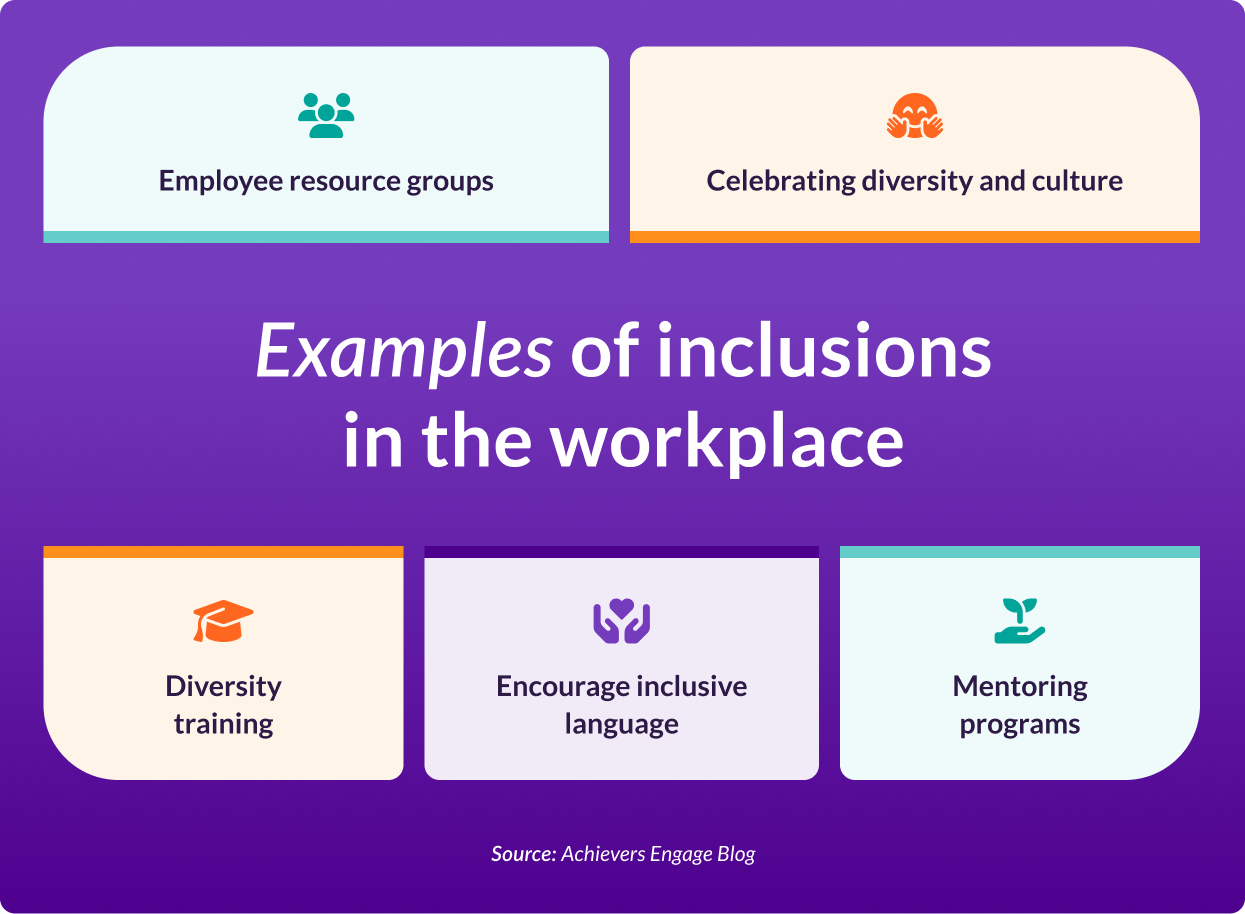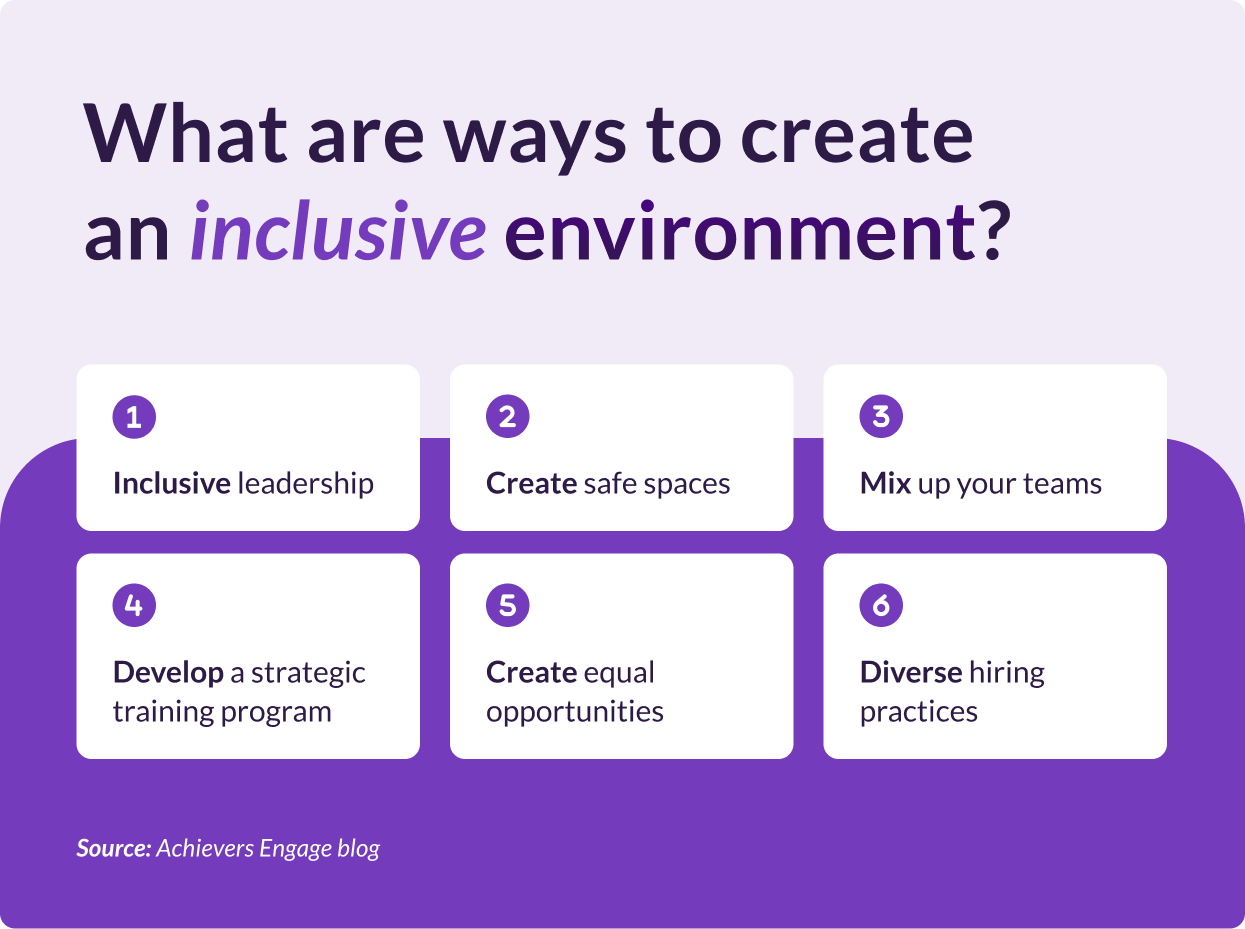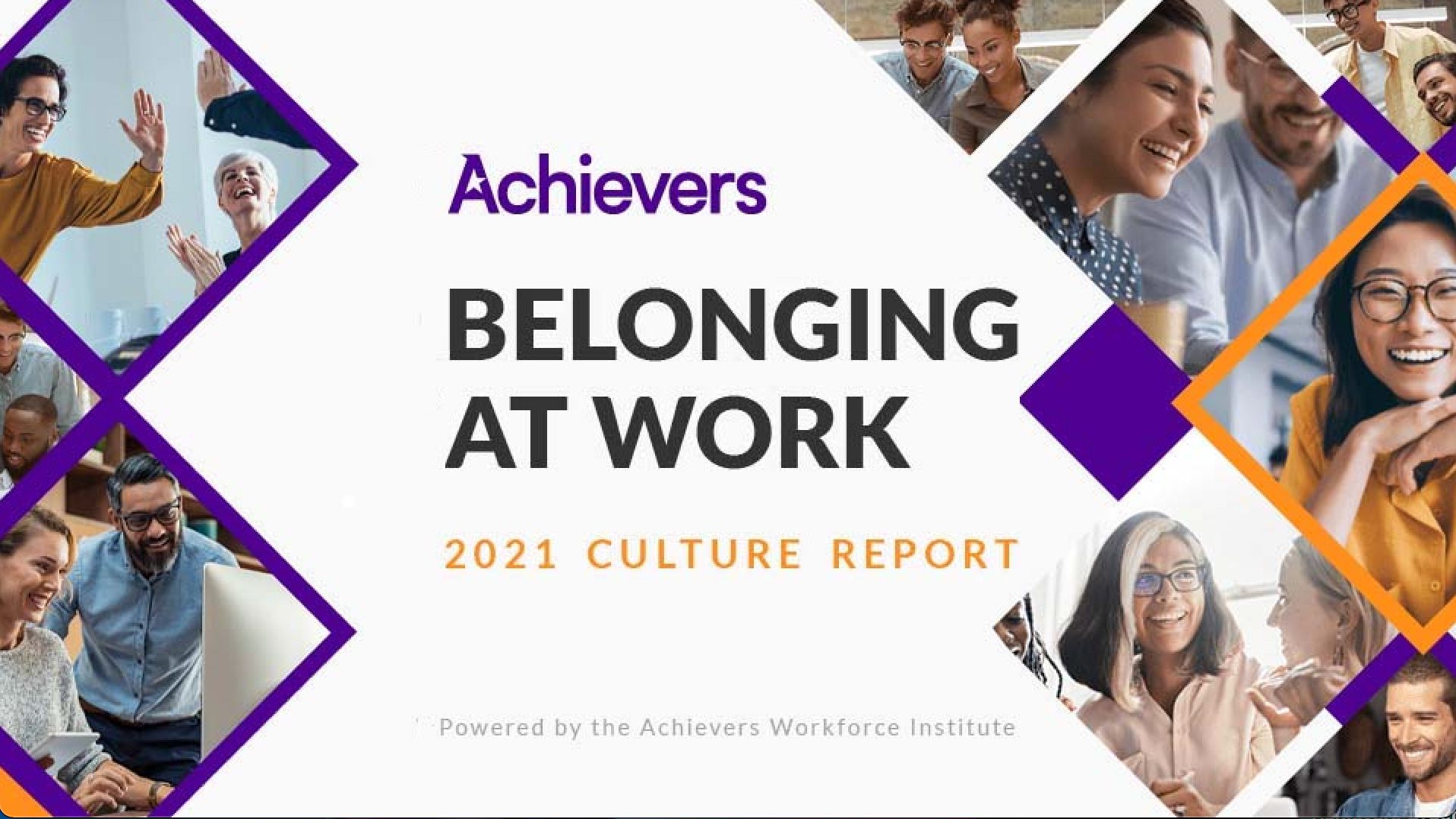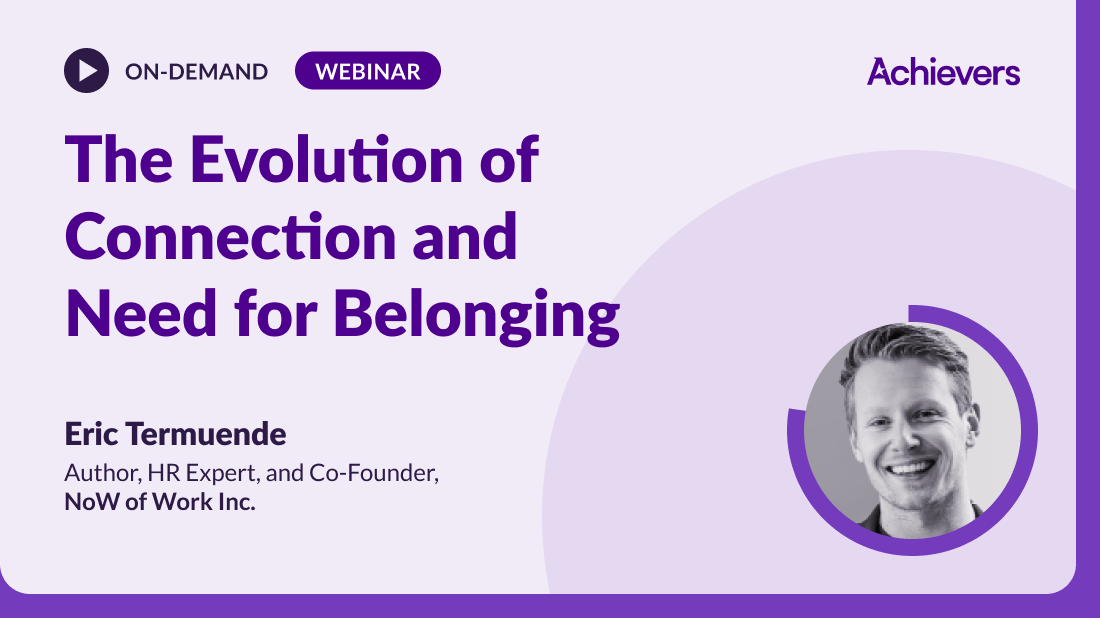Create a culture that means business™
Email address
Inclusion in the workplace should be a top priority for organizations striving to cultivate an engaging company culture and foster a strong sense of belonging among employees.
According to Gallup’s 2023 State of the Global Workplace, inclusive work environments can boost employee productivity, performance, and engagement. In fact, organizations that make the effort to foster an inclusive company culture experience a 56% increase in performance, as well as a 37% decrease in absenteeism.
Beyond the incredible benefits to organizational health and success, an inclusive work environment also brings a myriad of other advantages. Inclusion celebrates authenticity in employees, actively integrates diverse perspectives, and creates a sense of belonging that is essential to job satisfaction and retention.
What is inclusion?
The meaning of inclusion is centered around the principle that everyone deserves to feel welcomed, accepted, and embraced, regardless of their race, gender, disability, medical conditions, or other unique characteristics.
This involves developing inclusive policies and practices with the goal of creating an equitable work environment. This ensures that people from diverse backgrounds are culturally and socially embraced, with access to equal and fair treatment.
What is inclusion in the workplace?
Inclusion in the workplace means fostering an environment where diversity, equity, inclusion, and belonging (DEIB) are actively promoted and embraced. For example, creating a work environment where members of the 2SLGBTQIA+ community and other underrepresented groups feel valued, respected, and empowered.
However, inclusion goes beyond having team members from diverse backgrounds and perspectives, as it involves proactively ensuring that the workplace is an environment where everyone has access to equal opportunities and feels that they can contribute fully.
Why Is inclusion important in the workplace?
Inclusion in the workplace is important because it promotes diverse perspectives and boosts employee engagement – all of which leads to heightened productivity and performance.
Here are some elements that contribute to an inclusive work environment:
- Psychological safety: Critical to creating an inclusive workplace, as it makes sure that employees feel comfortable speaking up, taking risks, and making mistakes without the fear of negative consequences.
- Addressing microaggressions: By addressing subtle, everyday discriminatory behaviors or remarks, management can work towards creating an equitable workplace.
- Sense of belonging: An inclusive environment encourages employees to bring their authentic selves to work, voice their opinions, and participate in decision making processes, creating a rooted sense of belonging.
What are examples of inclusion in the workplace?
Inclusion is essential to helping all employees feel valued and empowered. Ways to build the foundations of an inclusive environment run the gamut of training and mentorship programs, resource groups, and more.
Here are five examples of how to promote inclusion:
- Employee Resource Groups (ERGs): ERGs offer networking and support opportunities for employees that have similar backgrounds and experiences – fostering a sense of community.
- Celebrating diversity and culture: Acknowledging cultural holidays and events celebrates and respects the diverse backgrounds of employees.
- Diversity training: A priority to facilitate regular diversity training helps promote the importance of diversity company-wide, teaching employees how to practice inclusion daily.
- Encouraging inclusive language: As an extension of diversity training, ensuring the use of inclusive language makes sure that communication is respectful of every employee’s identity in relation to sexual orientation, ethnicity, and allyship.
- Mentoring programs: Offering opportunities for employees across backgrounds to receive guidance and opportunities for professional development can bridge gaps in the employee experience to create a more inclusive culture.

What are ways to create an inclusive environment?
Without inclusion in the workplace, DEIB efforts will not succeed. Some ways to create an inclusive environment include prioritizing inclusive leadership, fostering effective communication, and embracing employees’ authentic selves in day-to-day interactions.
More ways to foster inclusion within your organization include:
- Inclusive leadership: Inclusion starts at the leadership level. Beyond modeling inclusive behavior, leaders should also be showing a commitment to DEIB principles in both their decisions and actions.
- Diverse recruitment practices: To create a more equitable workplace, companies should implement more diverse hiring practices such as broadening employee recruitment channels and teaming up with recruitment partners that focus on diversity.
- Develop DEIB-focused training: Offering DEIB training programs helps employees gain awareness of how important it is to be inclusive, what it looks like, and presents actionable ways for them to act in their daily roles.
- Open the lines of communication: Provide a safe space for employees to openly discuss and express their concerns without fear of judgement or criticism.
- Ensure equal access: Offering equal opportunities for all employees to advance and grow within the organization is essential to building an inclusive environment.
- Identify unconscious biases: Look out for and remove unconscious biases when making decisions to help create a more equitable workplace.
- Embrace authenticity: Giving employees an opportunity to bring their authentic selves to work promotes values of acceptance and inclusivity.

What are best practices for inclusion in the workplace?
1. Educate your leaders
Investing in educating leaders on DEIB principles is essential to creating inclusion in the workplace. Training and development might include seminars and workshops, and ongoing learning opportunities that address cultural competence, unconscious bias, and practices that lead to inclusive leadership.
Educating leaders is important, as it sets the tone for the company. The top-down approach to DEIB ensures that company culture has inclusion embedded in it.
2. Create a sense of belonging
Fostering a workplace where employees feel included and valued can be done through initiatives such as team building activities, creating company policies rooted in inclusivity, and leveraging rewards and recognition practices that celebrate individual contributions.
When employees feel a sense of belonging, they’re more likely to be productive, motivated, and engaged. This in turn reduces turnover, boosts job satisfaction, and contributes to a positive work atmosphere.
3. Employee Resource Groups (ERGs)
ERGs are voluntary, employee-led groups that allow individuals with similar backgrounds and interests to connect – creating a sense of belonging. They’re a safe space for employees to seek support, share their experiences, and connect with others that directly understand them.
ERGs are also a great way for organizations to gain valuable insight and feedback into the needs of diverse employee groups – informing new or updated policies and practices that can lead to more inclusion in the workplace.
4. Celebrate employee differences
Celebrating and honoring the diverse cultures, perspectives, and backgrounds of your employees helps build appreciation for diversity within the organization. Opportunities to celebrate differences can include heritage month events, cultural awareness days, and making the effort to highlight employee stories.
It’s important to celebrate differences, as it creates mutual respect and eliminates barriers amongst employees. It also reinforces that diversity and inclusion is valued in the workplace, boosting morale and creating an environment that is cohesive and supportive.
5. Communicate goals and measure progress
Setting up clear goals for inclusion in the workplace and frequently communicating them to employees creates accountability and transparency. Ways to measure progress include conducting surveys, gathering feedback, and establishing key performance indicators (KPIs) — all of which help with tracking the efficacy of DEIB programs.
What are the benefits of inclusion in the workplace?
- Enhanced creativity and innovation: An inclusive workplace brings together diverse perspectives and ideas while challenging traditional thinking – creating a fertile environment for creativity. Employees from different backgrounds can also approach collaborative problem solving from different angles, leading to more innovative solutions.
- Improved employee retention and engagement: Employees that feel included are more likely to feel engaged and experience job satisfaction and are less likely to look for a new role.
- Improved recruitment: An inclusive workplace allows companies to recruit from a larger and more diverse talent pool, as they have a stronger reputation and brand image that attract a wider range of candidates.
- Better decision making: Inclusive teams bring more innovative ideas to the table, encourage unconventional ways of thinking, and decision making processes that are more well-rounded.
- Boost in productivity and performance: Inclusive and diverse organizations tend to have higher levels of performance and productivity, as employees that feel valued and supported feel more committed and motivated in their work.
Connecting inclusion to employee engagement
Inclusion helps foster employee engagement and a strong sense of belonging within an organization. That’s because when an employee feels included and valued, they’re more likely to go above and beyond in their work – experiencing higher engagement, motivation, and productivity.
According to Forbes, high levels of belonging also correlate with high employee net promoter (eNPS) scores. As eNPS measures job satisfaction and loyalty within the organization, it’s clear that a sense of belonging – stemming from inclusion in the workplace – is essential to driving employee engagement.
Build an inclusive environment
Inclusion in the workplace will continue to be a vital component in 2024 and beyond. For diversity programs and initiatives to be successful, organizations must be inclusive, as diversity does not exist without inclusion.
When employees feel included, they feel a sense of belonging that drives increased positive performance results and creates collaborative teams who are innovative and engaged. Ultimately, higher employee engagement drives heightened levels of productivity, retention, and overall organizational success.
A positive, inclusive environment that embraces diversity fosters engagement and a sense of belonging. In the workplace, inclusion must remain a core ideology, encouraging employees to be their authentic selves — contributing to a more cohesive and productive organization.



